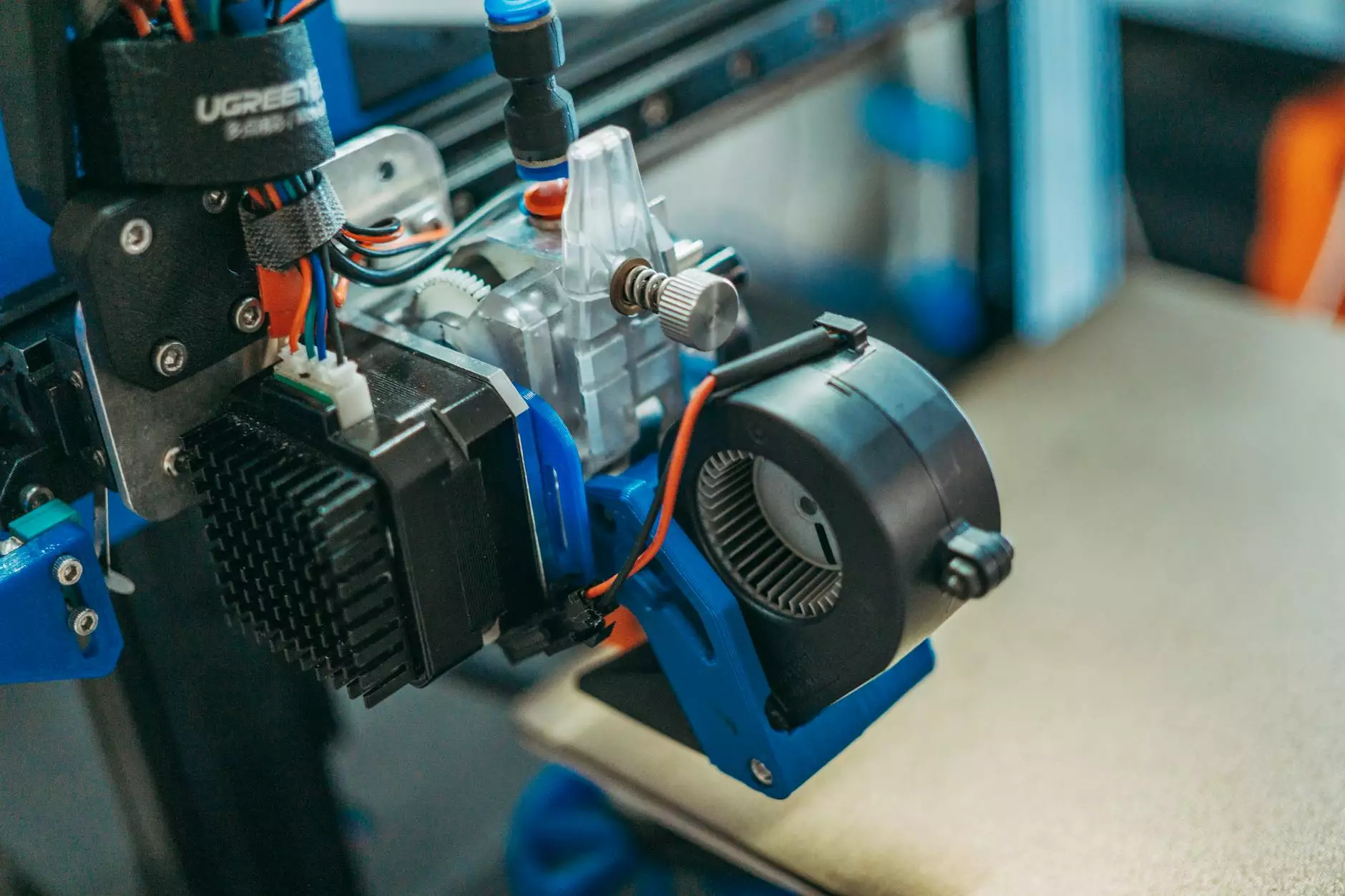The Ultimate Guide to 3D Printer Hardware: Innovations and Insights

In the rapidly evolving world of 3D printing, the choice of 3D printer hardware plays a pivotal role in determining the quality, speed, and flexibility of your printing projects. This comprehensive article will delve into the various components that make up 3D printer hardware, the latest innovations, and what you need to consider when purchasing or upgrading your printer. Whether you are a hobbyist, an engineer, or a business looking to harness the power of 3D printing, this guide is tailored for you.
Understanding 3D Printer Hardware Components
Successful 3D printing hinges on a deep understanding of its hardware components. Each part plays a critical role in the printing process, from design to finished product. Let's explore the essential components in detail:
1. The Frame
The frame is the backbone of any 3D printer. It provides structural integrity and stability during the printing process. There are two main types of frames:
- Cartesian Frame: The most common structure that moves along the X, Y, and Z axes.
- CoreXY Frame: Allows for faster movements and greater accuracy by using a unique belt configuration.
When selecting a frame, consider the size of your prints and the material used. Metal frames, while heavier, tend to provide better stability than plastic ones.
2. Print Bed
The print bed is where the magic happens. The choice of print bed material can greatly affect adhesion and the final outcome. Common materials include:
- Glass: Provides a smooth surface and excellent adhesion when heated.
- BuildTak: A popular option for greater adhesion without the need for adhesives.
- Aluminum: Offers durability and can be heated to enhance print quality.
3. Extruder
The extruder is responsible for melting and depositing the filament. There are two types of extruders:
- Direct Drive Extruder: Offers precise control over the filament feed, ideal for flexible filaments.
- Bowden Extruder: Uses a tube to guide the filament; it allows for a lighter print head, improving speed.
Choosing the right extruder depends on the types of materials you wish to work with.
4. Hot End
The hot end melts the filament before it's extruded. A good hot end ensures consistent extrusion rates and temperature control. Options include:
- All-Metal Hot Ends: Suitable for high-temperature filaments.
- PTFE-Lined Hot Ends: Ideal for lower temperature materials.
5. Stepper Motors
Stepper motors drive the movement of the print head and the bed. High-quality motors lead to better print quality and speed. Consider the torque and micro-stepping capabilities when evaluating these components.
6. Control Board
The control board is often referred to as the brain of the 3D printer. It processes all commands and ensures that each component functions correctly. Look for boards that support firmware updates, as this allows for enhancements and troubleshooting capabilities down the line.
7. Power Supply Unit (PSU)
Investing in a reliable power supply is crucial, as it ensures stable operations and prevents fluctuations that can affect print quality. A 24V power supply is often preferred for larger printers.
The Importance of Quality Materials
When it comes to 3D printer hardware, the quality of materials significantly impacts performance. High-grade components not only enhance reliability but also ensure better print fidelity. Additionally, consider the filament you will be using:
- PLA (Polylactic Acid): Easy to use and ideal for beginners.
- ABS (Acrylonitrile Butadiene Styrene): More durable but requires a heated bed and enclosure.
- TPU (Thermoplastic Polyurethane): Excellent for flexible parts.
Choosing the Right 3D Printer Hardware
Deciding which 3D printer hardware to invest in can be a daunting task. Here are some critical factors to evaluate before making any decisions:
1. Budget
Establish a clear budget before you start shopping. High-quality components may cost more but can lead to significant savings in the long run.
2. Purpose of Printing
Are you printing prototypes, detailed models, or functional parts? Your printing goal will influence your hardware choices.
3. Scalability
If you plan to expand your 3D printing capabilities in the future, consider hardware that can be easily upgraded or replaced.
4. User Support and Community
Choose brands and components that offer support and have an active user community. This can be invaluable for troubleshooting and advice.
Innovations in 3D Printer Hardware
The field of 3D printing continues to advance at a remarkable pace. Keeping up with the latest innovations can provide a competitive edge. Here are some recent trends:
1. Multi-Material Printing
Some of the latest extruder designs allow for the simultaneous printing of multiple materials. This innovation opens up new possibilities for complex geometry and functionality.
2. Automated Calibration
Gone are the days of manual bed leveling and calibration. Newer printers are increasingly equipped with AI-driven calibration systems that ensure optimal print conditions automatically.
3. Enhanced Software Integration
Innovative software solutions that analyze print quality in real-time are now available. They help to adjust hardware settings on-the-fly, leading to better results.
4. Eco-Friendly Filaments
A growing focus on sustainability has led to the development of biodegradable and recyclable filaments, reducing the environmental impact of 3D printing.
Common Issues and Troubleshooting
As with any technology, issues may arise with 3D printer hardware. Understanding common problems can save you time and frustration:
- Inconsistent Extrusion: This may be due to a clogged nozzle or incorrect filament diameter. Regular maintenance is crucial.
- Bed Adhesion Problems: Ensure the print bed is clean and consider using a suitable adhesive if necessary.
- Layer Separation: This can happen due to insufficient temperature or speed; adjust your settings accordingly.
Future Trends in 3D Printing Hardware
The future of 3D printer hardware looks promising. Here are some trends that are on the horizon:
1. Faster Printing Technologies
The industry is exploring new printing techniques that could drastically reduce print times, making 3D printing more efficient for mass production.
2. Smart Print Systems
Integration of IoT (Internet of Things) in 3D printers could lead to smarter systems capable of self-diagnosing issues and automating maintenance tasks.
3. Greater Material Diversity
As research progresses, we can expect an even broader range of materials—encompassing metals, ceramics, and bio-materials—suitable for 3D printing.
Conclusion
The realm of 3D printer hardware is vast and constantly evolving. By understanding the key components, staying updated on innovations, and learning how to troubleshoot effectively, you will be well on your way to maximizing your 3D printing potential. At 3DPrintWig.com, we are dedicated to providing you with the latest information, products, and support to help you succeed in your printing endeavors. Whether you are just starting or are an experienced professional, remember: the right hardware is essential to creating exceptional 3D prints.
Explore our range of high-quality 3D printer hardware at 3DPrintWig.com and take your 3D printing experience to the next level.









